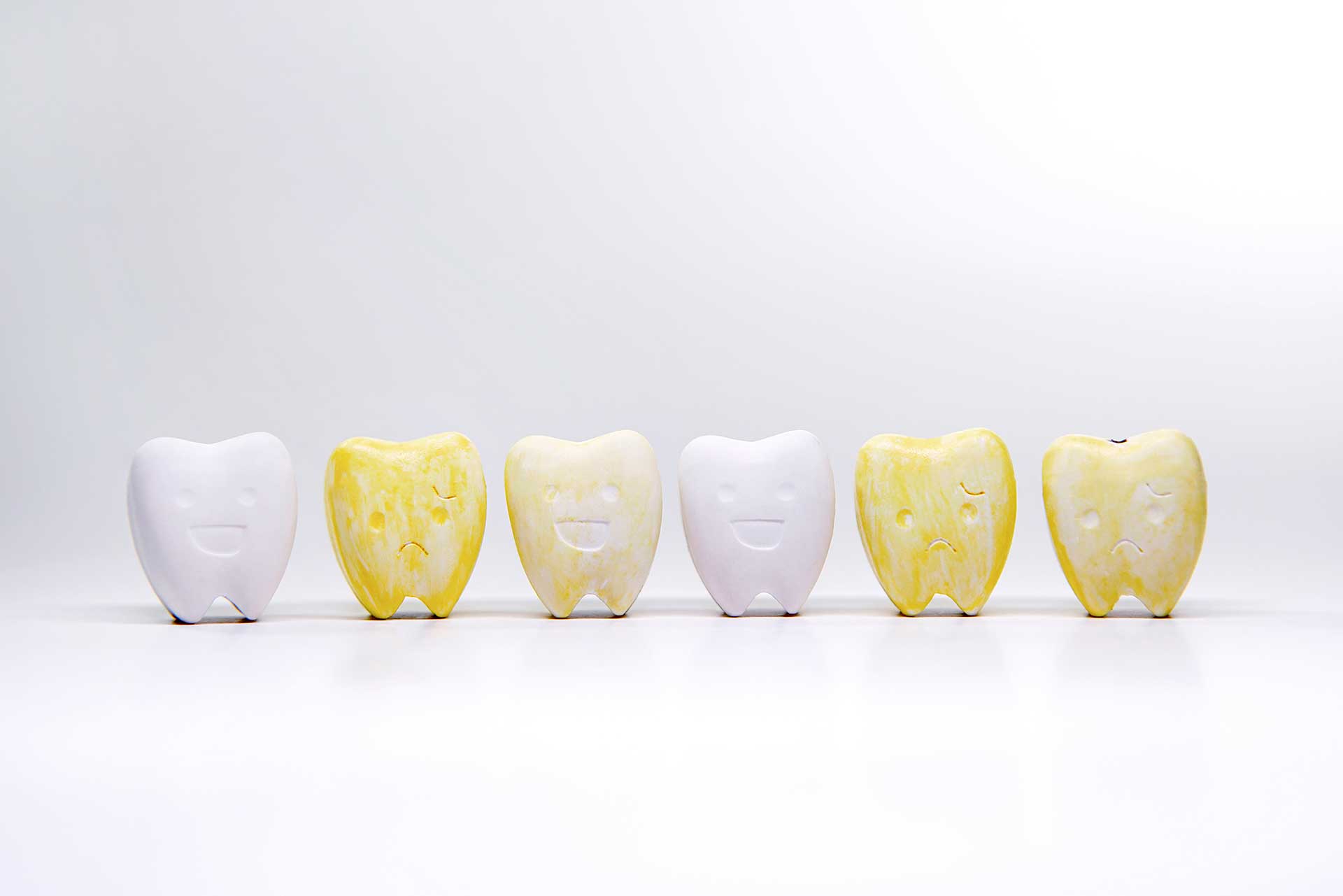Tooth discoloration refers to a change in the normal color of the teeth, where they appear different shades than their natural color. While teeth are normally white or light yellow, discoloration can cause them to become dark yellow, brown, gray or even black in color.
What Causes Tooth Discoloration?
There are several reasons for tooth discoloration. Some of the main causes include:
- Smoking: Smoking can lead to teeth yellowing and discoloration. Nicotine and other chemicals in tobacco can penetrate the tooth enamel, causing the teeth to take on a brown or yellowish hue. Therefore, smoking and tobacco use are one of the most common causes of changes in tooth color.
- Caffeine, wine and tea consumption: Beverages such as coffee, tea and red wine can cause staining on the surface of the teeth.
- Oral hygiene: Irregular brushing and failure to use dental floss can result in plaque buildup and tooth yellowing.
- Dietary habits: Consuming acidic drinks, sugary foods and fast food can contribute to tooth decay and discoloration. Additionally, colored beverages like coffee, tea, wine and fruit juice can also affect tooth color.
- Dental trauma: Tooth fractures, cracks or injuries can lead to changes in tooth color.
- Antibiotic usage: Some antibiotics, especially those used during childhood, can disrupt enamel formation, leading to tooth discoloration.
- Genetic factors: Some individuals may have naturally yellower or grayer teeth due to genetic factors.
- Aging: The aging process can cause enamel to thin and make the underlying darker-colored dentin layer more visible. This can result in teeth appearing yellowed or darker in color.
Treatment Methods for Tooth Discoloration
The treatment method for tooth discoloration depends on the underlying cause. For example, if the discoloration is due to dietary habits, the dentist may recommend teeth cleaning and whitening procedures. Similarly, tooth discoloration caused by smoking or tobacco use can be treated through teeth whitening.
If tooth discoloration is a result of aging, it cannot be treated with teeth whitening. However, dental fillings or veneers applied by a dentist can restore the natural appearance of the teeth.
Discoloration caused by antibiotics cannot be treated with teeth whitening. However, dental veneers or fillings performed by a dentist can help restore the natural color of the teeth.
Discoloration caused by dental trauma can vary depending on the condition and extent of the damage. Therefore, the dentist will assess the condition of the tooth and determine the appropriate treatment method. For example, if there is a minor crack in the tooth, teeth whitening or dental fillings may be used. However, if there is a major crack or fracture, the dentist may recommend tooth extraction and the application of a dental implant or bridge.
Frequently Asked Questions
What Should Be Done for a Discolored Tooth?
When a tooth changes color due to the frequent consumption of staining foods or unavoidable habits, the discoloration can become permanent. Generally, a discolored tooth can be treated through teeth whitening procedures.
Why Do Teeth Turn Gray?
Although teeth may be considered lifeless, they contain living pulp and nerves in their center. If the pulp and nerves inside the tooth have died, the tooth can turn dark pink, gray or black in color.
What Color Should Healthy Teeth Be?
The natural color of teeth is not pure white but rather yellow. As people age, the materials that come from the pulp and affect the tooth gradually change its color. Over time, teeth can undergo discoloration, turning into a darker shade of brown/yellow.
Is It Normal for Teeth to Be Yellow?
The natural color of teeth can be yellow. However, aside from the natural color, the most significant cause of tooth discoloration is eating and drinking habits. Additionally, teeth can become yellow due to the use of antibiotics during tooth development or constant medication usage.
